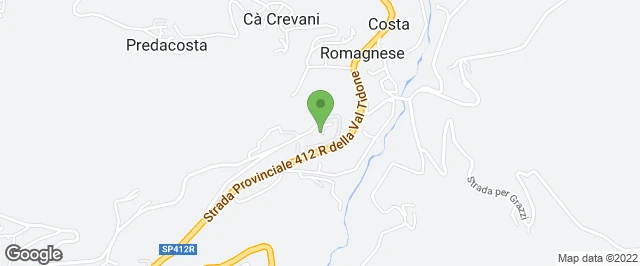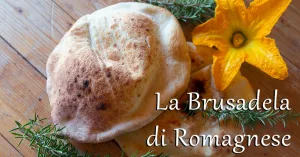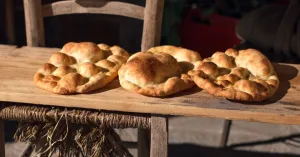La Brusadela, in italiano “bruciatella”, è nata tanti anni fa per caso: le famiglie di Romagnese, prima di infornare il pane, verificavano la temperatura dei forni a legna inserendo un pezzetto di pasta nel forno; il risultato era una specie di focaccia tonda e, appunto, bruciacchiata.
La ricetta è molto semplice e prevede la variante dolce e quella salata: acqua, farina e lievito sono gli ingredienti ai quali si aggiungono o sale o zucchero.
Ogni anno, l’ultima domenica di agosto, a Romagnese si svolge la tradizionale sagra della Brusadela, dove è possibile degustare la tradizionale focaccia cotta al momento nei pochi forni a legna tradizionali rimasti in uso.
La Brusadela di Romagnese
Un piatto della tradizione, da gustare sia in versione salata che dolce.
Ogni territorio può vantare numerosi prodotti tipici e tradizionali unici nel loro genere, infatti, ci sono alcuni tra questi a cui è stata attribuita la nomina di Denominazione Comunale.
Il marchio De.Co. è nato da una legge, più precisamente la Legge n. 142 ed è un vanto anche per molti Comuni dell’Oltrepò Pavese. Esso attesta che un determinato prodotto, alimentare o artigianale, ma anche una specifica ricetta, vengono considerati originari e tipici del luogo.
Moltissime sono le prelibatezze che vantano tale riconoscimento contribuendo a valorizzare le località da cui provengono e a garantire il loro legame storico e culturale con il territorio. Il Miccone di Stradella, i Malfatti di Fortunago, la patata del Brallo e la Mundiöla di Montesegale sono solo alcuni degli esempi di De.Co. che appartengono e che caratterizzano l’Oltrepò.
Scopri altri prodotti tradizionali e quali possiedono questo marchio, dove poterli trovare e, in molti casi, dove poterli assaporare.



